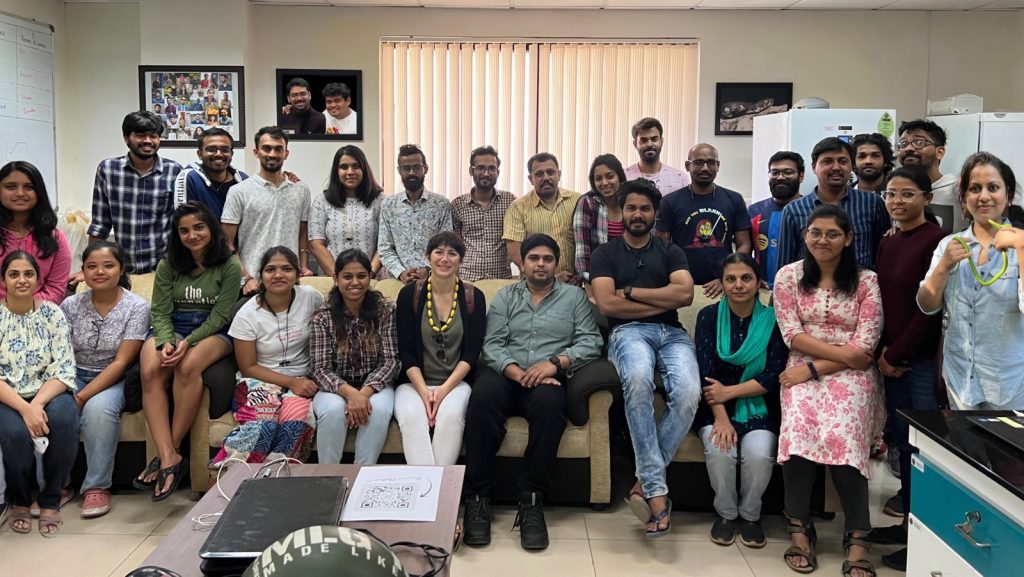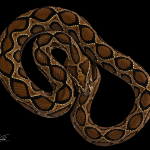Kartik Sunagar’s lab seeks to understand and improve treatments for snakebite

On a cold night in 2022, Kartik Sunagar and his team were in the Thar Desert, looking for a Sind krait, one of the most toxic snakes in the country.
“We were looking for it in the middle of the night, with no one around for miles and miles. If you get bitten, you are done for,” he says. “We were there for 10-12 days. We searched for it for a long time but couldn’t find one.”
When Kartik landed back in Bangalore airport, he had a photo waiting for him from a clinician he had worked with in Rajasthan. It was a photo of a person who had died from a Sind krait’s bite. The snake had been found in a village near where Kartik and his team had been searching.
“The snake had bitten someone the previous night, and the person died. It probably happened while we were there … when you are searching for snakes for research, you don’t find one. But they find these unfortunate individuals.”
It is the fate of these unfortunate individuals that fuels Kartik’s work.
An Assistant Professor at the Centre for Ecological Sciences (CES), Kartik is on a quest to address the poorly handled problem of snake bite treatment in the country.
As a child, animals had always piqued his interest. TV documentaries on National Geographic and Animal Planet, which his father recorded, fueled his fascination further. A young Kartik pored over coffee table books with photographs of snakes. He remembers the details from these books vividly, written by famous herpetologists Romulus Whitaker and Ashok Captain, whom he now calls friends and collaborators.
But it was when he saw an eyelash pit viper catch a hummingbird in a documentary that he was completely hooked.
“Hummingbirds move so fast. So, these snakes that sit on flowers in ambush must calculate where the bird will be in the next second or two, and then strike. They rarely miss,” he says.
The wheels clanged into motion. Kartik started voraciously reading about snakes. While studying for his Master’s at Karnataka University, Dharwad, he caught his first snake, a Dumeril’s black-headed snake.
“It was stupidity on my part to catch snakes early on, but I knew the snake I was dealing with,” he admits. “The interest in snakes particularly started there, and slowly [I became] fixated on the origin and evolution of venoms in snakes and other animals.”
Kartik’s focus sharpened as he pursued a PhD in Evolutionary Biology at the Universidade do Porto in Portugal. He also worked as a guest scientist at the Hebrew University of Jerusalem in Israel before joining IISc in 2017.
“When I decided to come back to India and start this lab, my focus shifted to snake bites because more than half the number of global snake bite deaths happen in India,” he explains.
“There are very few groups conducting research on venoms in India. Hardly any of them are focused on developing interventions for snake bites. Most of them study snake venom from a biochemical perspective. This is why I placed a major emphasis on developing effective therapeutics for treating this poor man’s problem.”
The first thing that his lab embarked upon was to study venom, in all its incarnations and evolutions. How does venom differ between animals? Is it different in different genders of the same species? Does the venom change when it is used in defense or for offense? How do different environments impact the composition and potency of the venom within the same species? How does venom change over evolutionary timescales?

“Knowing all these will help us discover better therapies for treating snake bite,” Kartik insists, “and also in discovering components with immense therapeutic potential.” For instance, the active ingredient in the major blood pressure medication, Captopril, is derived from snake venom. “This drug has saved millions of lives worldwide.”
The learnings in the last six years have been fascinating, Kartik says.
“The genes that code for venom change very fast. If the venom is being used for defense, those do not change as much as the venoms being deployed for offense or prey capture,” he reveals. “In the latter, you need variation because it’s an arms race. The prey evolves too. Besides, defensive venoms are infrequently deployed. So, not all venoms evolve very quickly.”
There are also a lot of variations in the make-up of venoms. Last year, Kartik’s team found that spider venom, for instance, is made up of smaller peptides (protein chains) and the variation in their venom is mostly provided by the modification of just one ancestral template gene.
On the other hand, proteins in snake venom have diverse types of genes coding for them.
These factors produce a lot of variations that make it difficult to get a one-size-fits-all solution for treatment against snake bites.
“If you look at the venoms of certain snakes against mice, they are not that potent. But against their natural prey like birds and amphibians, they are extremely potent,” he spells out. “Banded kraits in East India, which mostly feed on other snakes, are less toxic against mice. In contrast, the venom of Sind krait is one of the most potent in the world. The ecology of the animal drives their venom.”
This is why the existing methods used for snake bite treatment must be more nuanced, Kartik adds.
The main technology used to produce antivenoms remains ancient. The antivenom is produced by administering small doses of the venom to horses, mules, and ponies. These animals produce antibodies to counteract the venom. The antibodies are harvested from the animals’ blood and purified to make antivenom therapies for humans.
“Only 10% of the components are therapeutically relevant, 90% is junk,” Kartik says.
Another problem, he points out, is that because different populations of the same species can produce different venoms, antivenom made using one of these will not work against the other. Which is why his lab collects venom from the wild across the country in order to document this diversity. With India having such varied biogeographic conditions, this process is of prime importance.
“The diversity of venoms that you see in snakes of India and Africa is, fortunately or unfortunately, remarkable,” he explains. Australia is another place with fascinating diversity in snake venoms, especially due to its isolation over eons. One theory suggests that land snakes in Australia colonised ancient waters on two independent occasions. They formed the sea snakes and sea kraits that we find in oceans today. Scientists believe that some of them went back onto the land again and formed the existing Australian snakes that we see today.

Besides his lab’s research, Kartik has also been involved in setting up an Antivenom Research and Development Centre in Electronic City, in collaboration with the Institute of Bioinformatics and Applied Biotechnology (IBAB), with support from the Government of Karnataka.
Research, academic assignments and fieldwork have taken up so much of his time that the latest installment of his favourite Diablo game remains relatively untouched, he says.
His other hobbies, wildlife photography and travelling, are very much linked to his line of work. As he travels the world in search of venomous animals, he keeps adding photos to his collection – perhaps in the hope that they might inspire others to become fascinated by snakes, just as he once was as a child.






